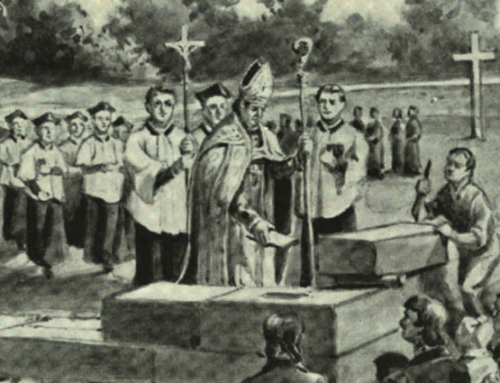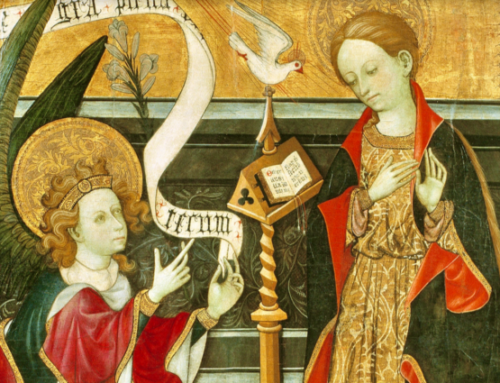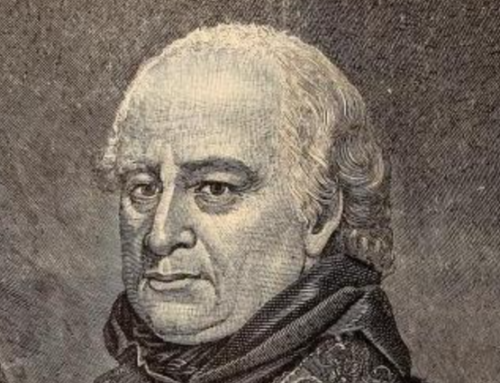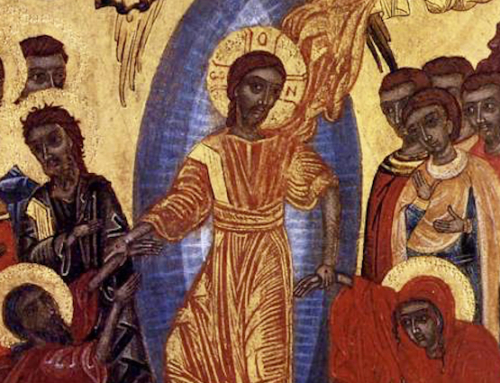The characters in Mozart’s “Figaro” are the furthest thing from mere archetypes. Instead, they are as real and as identifiable as the people around us today, for Mozart was interested in human nature itself, and not the ephemeral and artificial distinctions of class.
 “In my opinion, each number in Figaro is a miracle,” composer Johannes Brahms said of Mozart’s great opera a century after its creation. “It is totally beyond me how anyone could create anything so perfect; nothing like it was ever done again, not even by Beethoven.” Premiered in Vienna in 1786, Mozart’s Le Nozze di Figaro (Figaro’s Wedding) tells the tale of the lascivious Count Almaviva, who conspires to sleep with his wife’s maid, Susanna, before she can marry his manservant, Figaro. An opera buffa (“comic opera”), Figaro relies on many conventions of the eighteenth-century theater—mistaken identity, new-found blood relationships, silly disguises, far-fetched plotting, slapstick comedy—to paint, conversely, a realistic depiction of the many facets of human nature: love, lust, jealousy, hatred, revenge, regret, sorrow, and especially, forgiveness.
“In my opinion, each number in Figaro is a miracle,” composer Johannes Brahms said of Mozart’s great opera a century after its creation. “It is totally beyond me how anyone could create anything so perfect; nothing like it was ever done again, not even by Beethoven.” Premiered in Vienna in 1786, Mozart’s Le Nozze di Figaro (Figaro’s Wedding) tells the tale of the lascivious Count Almaviva, who conspires to sleep with his wife’s maid, Susanna, before she can marry his manservant, Figaro. An opera buffa (“comic opera”), Figaro relies on many conventions of the eighteenth-century theater—mistaken identity, new-found blood relationships, silly disguises, far-fetched plotting, slapstick comedy—to paint, conversely, a realistic depiction of the many facets of human nature: love, lust, jealousy, hatred, revenge, regret, sorrow, and especially, forgiveness.
The opera, commissioned by the “Enlightened” Holy Roman Emperor, Joseph II, was the first of three on which Mozart collaborated with the poet-priest—and womanizer—Lorenzo Da Ponte (Don Giovanni would follow the next year, and Così fan tutte in 1790). The story was based on Pierre Beaumarchais’s play, La folle journée, ou le Mariage de Figaro (The Mad Day, or The Marriage of Figaro), a controversial work that emphasized the foibles of the aristocracy and the tensions between the classes. Louis XVI of France in fact first prohibited its public performance until changes were made to the play. When it was finally approved in 1784, Figaro proved a hit with the French public, and the revised version retained enough incendiary social commentary that it may have had a role in inciting the French Revolution of five years later.
Though considerations of class necessarily figure prominently in Mozart and Da Ponte’s Figaro, the composer’s concern, as always, was with human nature itself. The tensions between the classes, and indeed between the sexes, were interesting to Mozart in so far as they relieved inherent truths about the human soul itself. So, Mozart and Da Ponte dropped from their libretto Figaro’s indictment of nobility, originally penned by Beaumarchais:
How came you to be the rich and mighty Count Almaviva? Why truly, you gave yourself the Trouble to be born! While the obscurity in which I have been cast demanded more Abilities to gain a mere Subsistence than are requisite to govern Empires. And what, most noble Count, are your Claims to Distinction, to pompous Titles, and immense Wealth, of which you are so proud, and which, by Accident, you possess? For which of your Virtues? Your Wisdom? Your Generosity? Your Justice?
In its place near the end of the opera, Mozart and Da Ponte substituted a diatribe against women’s infidelity:
Open your eyes for a moment,
rash and foolish men,
look at these women,
look at what they are….
They are thorny roses,
cunning vixens,
hugging bears,
spiteful doves,
masters of deceit,
friends of trouble,
who pretend, lie,
feel no love,
feel no pity,
no, no, no, no, no!
The rest I won’t say,
because everyone knows it already.
Not only was it, of course, a safer course in eighteenth-century Western Europe to castigate women rather than aristocrats, but Mozart surely found more humor and irony in this aria, which was in keeping with the comic spirit of the piece as a whole. In a story that centers on the serial infidelity of a nobleman, and which the lead female characters are faithful to their lovers, Mozart has a manservant sing of the untrustworthy nature of women.
Moreover, it is likely that Mozart found a blanket condemnation of the wealthy an empty indictment, for he knew that wealth did not change the nature of men. But women were in their essence different from men—at least in some respects—in all times and places; indeed, the idea that women “all do the same” provided the title of the third of the Mozart-Da Ponte trilogy (Così fan Tutte). Thus, it was the battle of the sexes that Mozart found much more interesting and more primal than the battle of the classes.
And yet, Mozart and Da Ponte did not entirely shy away from class antagonisms; they added a soliloquy—the aria “Se voul ballare”—to the libretto, in which Figaro sings to the absent Count of his intention to allow him “to go dancing,” but promising that he himself “will call the tune.” Keeping in mind that Figaro‘s libretto is in Italian, the language of the Viennese nobility, it can be argued that Mozart was here speaking directly to aristocrats, warning them to behave themselves. This is true, but the aria should be seen more as a stinging admonition to an individual rather than a revolutionary clarion call, in that Figaro here—and throughout the opera—implicitly accepts his lower station. Had the Count been an entirely honorable man, Figaro would have no need to try to foil his master’s designs through manipulation.
Later in the opera, in an aria that serves as a parallel to Figaro’s “Se voul ballare,” Mozart and Da Ponte seem to reaffirm the social order: The Count rages against the absent Figaro in “Hai già vinta la causa,” promising that he will foil his servant’s plans, and declaring to Figaro, “you were not born, bold fellow, to give me torment or perhaps to laugh at my unhappiness.” And though the music is bold, even somewhat threatening, the fact that the Count’s anger is without foundation—his poor behavior being the cause of the unruliness of his servants—must have been obvious to the aristocracy of Mozart’s day, as it is to modern audiences. Again, here, it is a personal vendetta that is at stake, in which class plays only an ancillary role. In fact, it seems that it was never the political overtones of Mozart’s finished that worried Joseph II’s censors, but rather some of its sexual innuendo.
In the end, human nature interested Mozart more than politics: Whereas the latter was ephemeral and artificial, the former was eternal and natural. Mozart understood that it was human nature acted out on the stage of life that bred class divisions and social tensions.
Through the combined brilliance of Mozart’s music and Da Ponte’s words, then, the characters in Figaro are made the furthest thing from mere archetypes; they are as real and as identifiable as the people around us today. Indeed, some aficionados of the opera refer to the Count and Countess, Figaro and Susanna, the vengeful Dr. Bartolo and the matronly Marcellina, the libidinous young Cherubino, as their “friends,” so well are they drawn individually, all reflecting in different ways and to varying degrees both the virtues and vices of human nature. Mozart shows on the one hand how pathetically petty and mean we humans can be–witness the passive-aggressive duet, “Via Resti Servita,” below between Susanna and Marcellina, who are rivals for Figaro’s attentions—and yet how even the most oafish among us are capable of true nobility of emotion: the denouement of the Count’s begging the Countess for forgiveness being the ultimate example.
And, of course, at the heart of this story is the faithful love of Figaro and Susanna, which Mozart and Da Ponte clearly celebrate through their music and words. Though their relationship is marred at times by misplaced mistrust, as well as squabbling engendered by confusion over their predicament, their devotion to each other is unquestioned by the audience, as they scheme together to preserve Susanna’s purity in the face of the Count’s advances. One of the most tender moments of the opera occurs in the garden just prior to the denouement of the story, when the lovers embrace after a final case of mistaken identity, and Figaro declares: “Now peace, my dearest treasure: I recognized the voice I love, and which keeps my heart in thrall.” This section is accompanied by a beguiling, lullaby-like theme, perhaps Mozart’s most purely beautiful music of the entire opera.
Mozart believed that it was his music, more than Da Ponte’s words, that primarily defined the characters of Figaro. “I should say that in an opera the poetry must be the obedient daughter to the music,” the composer opined prior to his collaboration with the Italian poet. “Why do the Italian comic operas please everywhere—in spite of their miserable libretti? Just because the music reigns supreme and when one listens, all is forgotten.” But Da Ponte would later disagree with his colleague: “If the words of a dramatic poet are nothing but a vehicle to the notes, and an opportunity to the action, what is the reason that a composer of music does not take at once a doctor’s recipes, a bookseller’s catalogue, or even a spelling book, instead of the verses of a poet? Mozart knew very well that the success of an opera depends, first of all on the poet; that without a good poem an entertainment cannot be perfectly dramatic…. I think that poetry is the door to music, which can be very handsome, and much admired for its exterior, but nobody can see its internal beauties if the door is wanting.”
If Figaro, then, was a work about human beings, eschewing revolutionary politics, it was, certainly revolutionary in the artistic sense. “We wanted to present our most gracious and honorable public with a virtually new kind of play,” Da Ponte explained. “The musical numbers are of the widest possible variety, so as not to leave any performers unoccupied for long periods, to avoid the tedium and monotony of long recitatives, and to lend expression to the many different passions which the characters experience.” Thus, though the entire opera takes some three hours to perform, at no point does Figaro drag. Mozart and Da Ponte intentionally kept the action moving, with short arias (most lasting about three minutes, and only a couple lasting even four), brief recitatives, and with the sections following each other quickly, without break. In fact, in order to heighten the tension of the Act II and IV finales (which, respectively, precede the intermission and end the opera), Mozart dispensed with recitative altogether, substituting a series of sections in which duets grow to trios, then to quartets, quintets, sextets, septets, and finally, octets. “Recitativo is entirely excluded from this division of the piece,” Da Ponte said of the these finales. “The whole of it is sung, and it must contain every species of melody.” In this way, the frantic spirit of Beaumarchais’ non-stop “Mad Day” is preserved.
The audiences in Vienna were enthralled by the unprecedented genius of Figaro. A singer in the premier production recalled: “At the end of the opera, I thought the audience would never have done applauding and calling for Mozart; almost every piece was encored…. Never was anything more complete than the triumph of Mozart and his Nozze di Figaro, to which numerous overflowing audiences bore witness.”
Almost two-and-a-half centuries later, audiences still bear witness to the beauty and genius of this, the greatest of all operas–and perhaps indeed of all human creations.
The Imaginative Conservative applies the principle of appreciation to the discussion of culture and politics—we approach dialogue with magnanimity rather than with mere civility. Will you help us remain a refreshing oasis in the increasingly contentious arena of modern discourse? Please consider donating now.
The featured image is “The Stolen Kiss” (late 1780s) by Jean-Honoré Fragonard and is in the public domain, courtesy of Wikimedia Commons. It has been brightened for clarity.







Leave A Comment